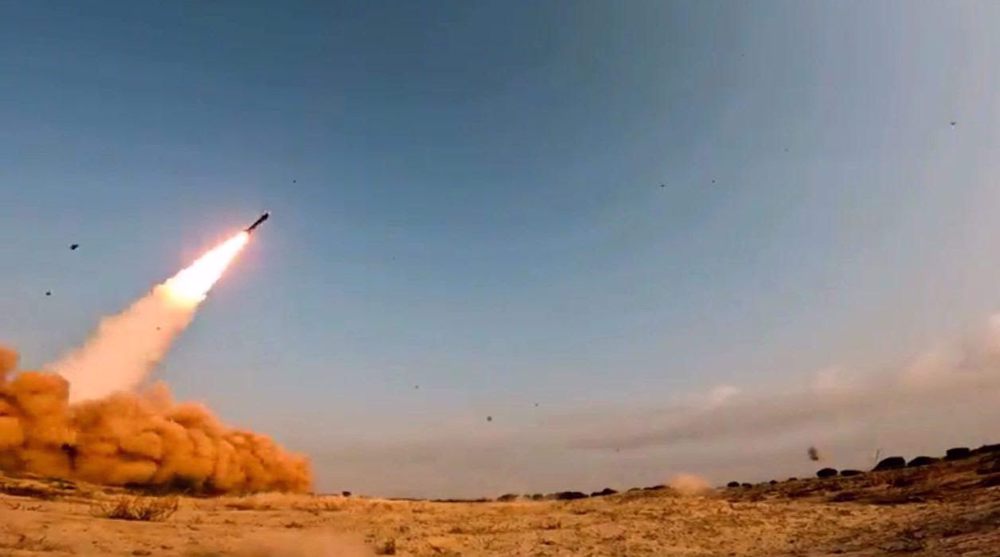In a dramatic turn of events, Iran has fired a hypersonic missile called Fattah-1 at Israel. This was part of a wave of airstrikes that took place overnight.
Iran’s Powerful Strike with Fattah-1
Iran claimed the attack was part of Operation Honest Promise 3 and used the Fattah-1 missile to strike targets in what it calls the “occupied territories.”
Iran’s military has announced that it now controls the whole region’s airspace. This missile attack is not the first time Fattah-1 has been used. Iran had already used this weapon in an earlier operation on October 1, 2024, during a campaign called Operation True Promise II. But this time, Iran is using it again in the middle of an ongoing and heated conflict with Israel.
According to Iranian sources, this attack is part of their eleventh round of missile launches. Iran believes the missile is a game-changer in the ongoing battle, as it flies at extreme speeds and evades defense systems like Israel’s Iron Dome and Arrow.
What Makes a Hypersonic Missile So Dangerous?
To understand why Fattah-1 matters so much, we need to understand what a hypersonic missile is. “Hypersonic” describes a motion that is at least five times the speed of sound. Approximately 6,100 kilometers per hour, or 3,800 miles per hour, is known as Mach 5. These missiles move so fast that they are extremely difficult to detect or stop once they are in the air.
🚀 India’s Answer to China’s Arsenal? Vishnu Hypersonic Missile Prepares for Launch
There are different types of hypersonic missiles. Some missiles glide through the air after launch. Others cruise at low altitudes, dodge radar systems, and become harder to intercept. Engineers also design these missiles to change direction mid-flight, so even advanced defense systems may fail to stop them. Most normal ballistic missiles also reach hypersonic speeds, but the key difference with missiles like Fattah-1 is that they are more maneuverable, especially in the final moments before hitting their targets.
This ability to shift directions quickly while moving at such high speeds makes them nearly impossible to shoot down. That’s why many countries are concerned when such weapons are used in battle.
Inside the Fattah-1 Missile
Iran’s first hypersonic missile, the Fattah-1, was unveiled to the public in 2023. It has a single-stage propulsion system, runs on solid fuel, and is around 12 meters long. Solid fuel means the missile is ready to launch without much preparation time, which makes it faster to use during sudden attacks.
Fattah-1 can hit targets as far as 1,400 kilometers away. That distance is enough to strike many locations across the Middle East. The missile can carry up to 200 kilograms of explosives, making it highly destructive when it reaches its target.
The Fattah-1’s warhead, the component of the missile that explodes, is one of its most crucial components. The warhead is attached to something called a Hypersonic Glide Vehicle (HGV). This special piece allows the missile to glide at very high speeds and change direction while flying, especially as it gets closer to the ground. That means it can avoid radar detection and slip through even strong defense shields.
World’s Most Powerful Nations Call Out Iran, Demand Peace in Explosive G7 Statement
The alarming aspect about Fattah-1 is its speed. It can reportedly reach speeds of up to 17,900 kilometers per hour. That’s about five kilometers per second—fast enough to cross the entire country of Israel in under two minutes.
Military experts describe the missile’s warhead as being on a “maneuverable reentry vehicle.” This simply means that once the missile reaches a high point in the air, the warhead comes back down toward Earth, but not in a straight line. Instead, it can zigzag or turn, which helps it dodge anti-missile systems.
Iran says the missile is meant to get past Israel’s defenses, and it has even earned the nickname “Israel-striker.” That nickname shows how confident Iran is in the missile’s ability to bypass defense systems and hit its targets.

